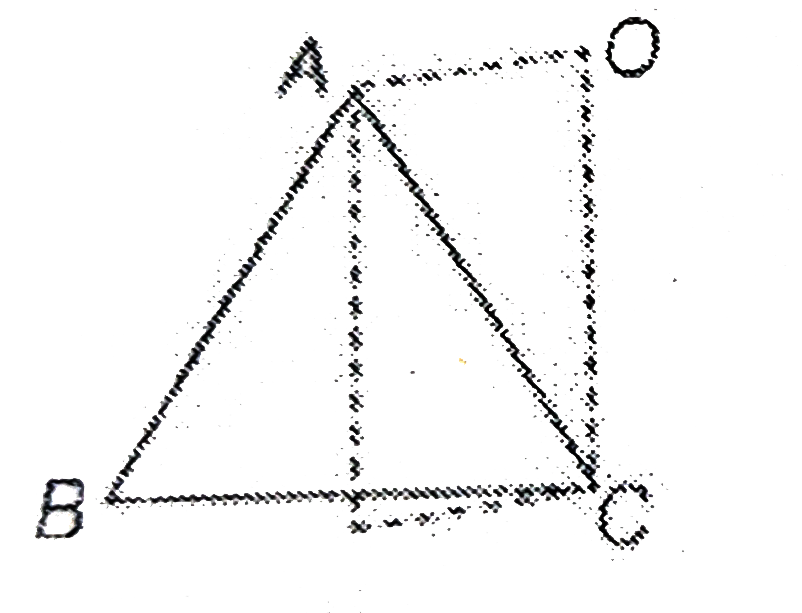The scalar →A.[(→B×→C)×(→A+→B+→C)] equals
A
0
B
[→A→B→C]+[→B→C→A]
C
[→A→B→C]
D
None of the above
Video Solution
Text Solution
The correct Answer is:A
→A. {(→B+→C)×→A+→B+→C)}
[∵ it is a scalar triple product of three vectors of the form →A,→B+→C,→A+→B+→C] ,

=→A. (→B×→A+→B×→B
+→B×→C+→C×→A+→C×→B+→C×→C)
=→A.(→B×→A)+→A.(→B×→C)+→A.(→C×→B)
=[→A→B→A]−[→A→B→C]=0
|
Updated on:21/07/2023
Similar Questions
Knowledge Check
- Question 1 - Select One
If →a,→b and →c are three non- coplanar vectors then
(→a+→b+→c).[(→a+→b)×(→a+→c)] equalsA0B[→c→b→c]C[→c→b→c]D[→a→b→c] - Question 2 - Select One
If →a,→b and →c are unit coplanar vectors then the scalar triple product [2→a−→b2→b−→c2→c−→a] is
A0B1C−√3D√3 - Question 3 - Select One
Let the vectors →a,→b,→c and →d be such that
(→a×→b)×(→c×→d)=→0. If P1 and P2 are planes determined by the pairs of vectors →a,→b and oerset(→)(c),→d respectively then the angle between P1 and P2 isA0Bπ/4Cπ/3Dπ/2
If →A,→B,→C three non-coplanar vectors then
→A,(→B×→C)(→C×→A).→B+→B.(→A×→C)→C.(→A×→B)=.........View SolutionIf A,B,C,D are any four points in space then prove that ∣∣−−→AB×−−→CD+−−→BC×−−→AD+−−→CA×−−→BD∣∣
=( area of ΔABD)View SolutionIf →a and →b are vectors in space given by →a=ˆi−2ˆj√5 and →b=2ˆi+ˆj+3ˆk√14 then the value of
(2→a+→b).[(→a×→b)×(→a−2→b)] is .........View SolutionIf →A=2ˆi+ˆk,→B=ˆi+ˆj+ˆk and →C=4ˆi−3ˆj+7ˆk
Determine a vector →R satisfying →R×→B=→C×→B and →R .→A=0View SolutionLet →A,→B,→C be vectors of length 3, 4, 5, respectively Let →A be perpendicular to →B+→C,→B to →C+→A and →C to →A+→B then the length of vector →A+→B+→C is .......
View Solution

